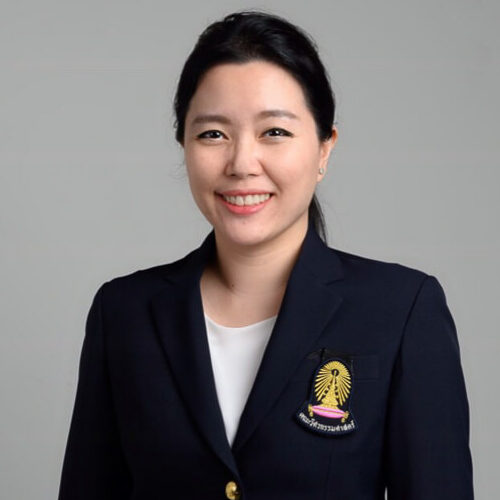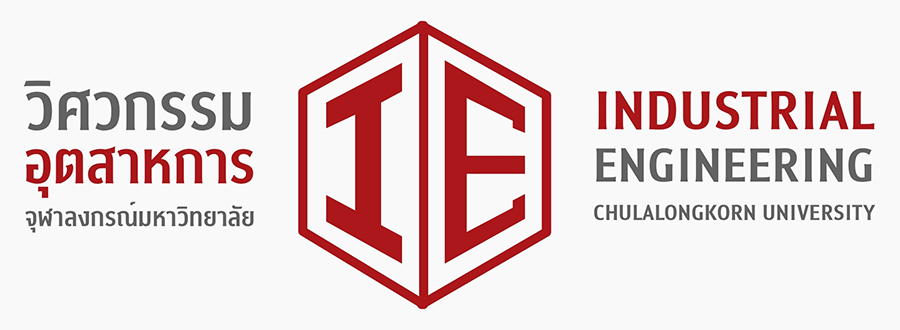- Home
- /
- Haruetai Lohasiriwat

Assoc. Prof. Haruetai Lohasiriwat
- 6th Floor of Engineering 4 Bldg.
- +66-2218-6828
- haruetai.l@chula.ac.th
Overview
Haruetai Lohasiriwat’s researches center on both basic and applied ergonomics to promote the most efficient and safe interaction between human and the other system components.
Education
M.S. Industrial and Systems Engineering
Virginia Tech, United States, 2003
B.Eng Industrial Engineering
Chulalongkorn University, Thailand, 2000
Expertise
Human Factors & Safety Engineering
Publications
2020
Haruetai Lohasiriwat, Worachok Chaiwong
Ergonomic Design for Sausage Packing Hand Tool Conference
vol. 91, 2020, (Cited by: 3; All Open Access, Gold Open Access).
@conference{Lohasiriwat2020789,
title = {Ergonomic Design for Sausage Packing Hand Tool},
author = {Haruetai Lohasiriwat and Worachok Chaiwong},
url = {https://www.scopus.com/inward/record.uri?eid=2-s2.0-85091704468&doi=10.1016%2fj.procir.2020.02.236&partnerID=40&md5=1065878691ea8f7f20f34abee2d96904},
doi = {10.1016/j.procir.2020.02.236},
year = {2020},
date = {2020-01-01},
journal = {Procedia CIRP},
volume = {91},
pages = {789 – 795},
note = {Cited by: 3; All Open Access, Gold Open Access},
keywords = {},
pubstate = {published},
tppubtype = {conference}
}
2019
Haruetai Lohasiriwat, Noppamas Weingket
Effects of gender, laterality, reaching location, and body posture on the maximum reach of elders Journal Article
In: Industrial Engineering and Management Systems, vol. 18, no. 4, pp. 638 – 646, 2019, (Cited by: 0).
@article{Lohasiriwat2019638,
title = {Effects of gender, laterality, reaching location, and body posture on the maximum reach of elders},
author = {Haruetai Lohasiriwat and Noppamas Weingket},
url = {https://www.scopus.com/inward/record.uri?eid=2-s2.0-85085127487&doi=10.7232%2fiems.2019.18.4.638&partnerID=40&md5=707c409fd37e8950555880c1e1603a5b},
doi = {10.7232/iems.2019.18.4.638},
year = {2019},
date = {2019-01-01},
journal = {Industrial Engineering and Management Systems},
volume = {18},
number = {4},
pages = {638 – 646},
note = {Cited by: 0},
keywords = {},
pubstate = {published},
tppubtype = {article}
}
Somkiat Tangjitsitcharoen, Haruetai Lohasiriwat
Redesign of a continuous passive motion machine for total knee replacement therapy Journal Article
In: Journal of Health Research, vol. 33, no. 2, pp. 106 – 118, 2019, ISSN: 08574421, (Cited by: 7; All Open Access, Gold Open Access).
@article{Tangjitsitcharoen2019106,
title = {Redesign of a continuous passive motion machine for total knee replacement therapy},
author = {Somkiat Tangjitsitcharoen and Haruetai Lohasiriwat},
url = {https://www.scopus.com/inward/record.uri?eid=2-s2.0-85066083374&doi=10.1108%2fJHR-06-2018-0024&partnerID=40&md5=a8ea80240a3dcc9a74ab553b299a11a8},
doi = {10.1108/JHR-06-2018-0024},
issn = {08574421},
year = {2019},
date = {2019-01-01},
journal = {Journal of Health Research},
volume = {33},
number = {2},
pages = {106 – 118},
publisher = {Emerald Publishing},
abstract = {Purpose: After knee replacement surgery, rehabilitation is needed to recover to normal levels of mobility. A continuous passive motion (CPM) machine is usually introduced at this stage to aid rehabilitation. However, the redundant structure and complex mechanism of the existing machine has resulted in irregular use. The purpose of this paper is to redesign the current machine. Design/methodology/approach: The mechanical and electrical systems of the current machine were studied alongside interviews with stakeholders. Problems with the existing machine were identified. Related information was gathered in both the engineering and medical aspects. The redesign concept of the equipment was specified following engineering analyses to develop the final model. Finite element analysis was performed to ensure the appropriate size and dimension of the equipment. The prototype of the redesigned CPM was manufactured in-house. Product testing was conducted with 40 volunteers including experienced therapists, nurses, university students and working-age people. Findings: Compared to the previous machine, the newly designed model was improved in both functioning and manufacturing costs. The redesigned machine is more durable and consists of a less complex structure. Originality/value: The redesigned machine introduces some new features and removes unnecessary functions. As a result, the model costs less and hence, is considered beneficial to the general public. More utilization is expected which could eventually reduce the therapists’ workload at the hospital. This research provides well-defined processes of the product development starting from the users’ requirement analysis to the prototype testing stage. © 2019, Somkiat Tangjitsitcharoen and Haruetai Lohasiriwat.},
note = {Cited by: 7; All Open Access, Gold Open Access},
keywords = {},
pubstate = {published},
tppubtype = {article}
}
2018
Somkiat Tangjitsitcharoen, Haruetai Lohasiriwat
vol. 25, Elsevier B.V., 2018, ISSN: 23519789, (Cited by: 9; All Open Access, Gold Open Access).
@conference{Tangjitsitcharoen2018279,
title = {Hybrid Monitoring of Chip Formation and Straightness in CNC Turning by Utilizing Daubechies Wavelet Transform},
author = {Somkiat Tangjitsitcharoen and Haruetai Lohasiriwat},
editor = {Ji W. and Wang L. and Wang X.V. and Onori M.},
url = {https://www.scopus.com/inward/record.uri?eid=2-s2.0-85065677264&doi=10.1016%2fj.promfg.2018.06.084&partnerID=40&md5=8b22ef489078e9059f14442cfdef4e5a},
doi = {10.1016/j.promfg.2018.06.084},
issn = {23519789},
year = {2018},
date = {2018-01-01},
journal = {Procedia Manufacturing},
volume = {25},
pages = {279 – 286},
publisher = {Elsevier B.V.},
abstract = {The relations of straightness, chip formation, and cutting forces are investigated during the CNC turning process. Utilizing the Daubechies wavelet transform, the dynamic cutting forces are decomposed to classify the straightness and broken chip signals according to the frequency ranges. The straightness frequency occurs at the lower frequency on the higher level of wavelet transform. The chip breaking frequency appears at the higher frequency on the lower level of wavelet transform according to the chip length. The results supported the use of the decomposed feed forces to estimate the straightness error during the cutting process. © 2018 Elsevier B.V. All rights reserved.},
note = {Cited by: 9; All Open Access, Gold Open Access},
keywords = {},
pubstate = {published},
tppubtype = {conference}
}
Somkiat Tangjitsitcharoen, Haruetai Lohasiriwat
Intelligent monitoring and prediction of tool wear in CNC turning by utilizing wavelet transform Journal Article
In: International Journal of Advanced Manufacturing Technology, vol. 99, no. 9-12, pp. 2219 – 2230, 2018, ISSN: 02683768, (Cited by: 15).
@article{Tangjitsitcharoen20182219,
title = {Intelligent monitoring and prediction of tool wear in CNC turning by utilizing wavelet transform},
author = {Somkiat Tangjitsitcharoen and Haruetai Lohasiriwat},
url = {https://www.scopus.com/inward/record.uri?eid=2-s2.0-85037734965&doi=10.1007%2fs00170-017-1424-5&partnerID=40&md5=ce0e22f8a2a269e39154caacfcf732a7},
doi = {10.1007/s00170-017-1424-5},
issn = {02683768},
year = {2018},
date = {2018-01-01},
journal = {International Journal of Advanced Manufacturing Technology},
volume = {99},
number = {9-12},
pages = {2219 – 2230},
publisher = {Springer London},
abstract = {In order to realize an intelligent CNC machine, this research proposed the in-process tool wear monitoring system regardless of the chip formation in CNC turning by utilizing the wavelet transform. The in-process prediction model of tool wear is developed during the CNC turning process. The relations of the cutting speed, the feed rate, the depth of cut, the decomposed cutting forces, and the tool wear are investigated. The Daubechies wavelet transform is used to differentiate the tool wear signals from the noise and broken chip signals. The decomposed cutting force ratio is utilized to eliminate the effects of cutting conditions by taking ratio of the average variances of the decomposed feed force to that of decomposed main force on the fifth level of wavelet transform. The tool wear prediction model consists of the decomposed cutting force ratio, the cutting speed, the depth of cut, and the feed rate, which is developed based on the exponential function. The new cutting tests are performed to ensure the reliability of the tool wear prediction model. The experimental results showed that as the cutting speed, the feed rate, and the depth of cut increase, the main cutting force also increases which affects in the escalating amount of tool wear. It has been proved that the proposed system can be used to separate the chip formation signals and predict the tool wear by utilizing wavelet transform even though the cutting conditions are changed. © 2017, Springer-Verlag London Ltd., part of Springer Nature.},
note = {Cited by: 15},
keywords = {},
pubstate = {published},
tppubtype = {article}
}
2015
Phairoat Ladavichitkul, Haruetai Lohasiriwat
Target distance and exposure time of glance to protect multiple choice examination dishonesty Conference
2015, (Cited by: 0).
@conference{Ladavichitkul2015325,
title = {Target distance and exposure time of glance to protect multiple choice examination dishonesty},
author = {Phairoat Ladavichitkul and Haruetai Lohasiriwat},
url = {https://www.scopus.com/inward/record.uri?eid=2-s2.0-84941585527&doi=10.1201%2fb17990-57&partnerID=40&md5=869f2a5255181d127ad2a43cdedabece},
doi = {10.1201/b17990-57},
year = {2015},
date = {2015-01-01},
journal = {New Ergonomics Perspective - Selected Papers of the 10th Pan-Pacific Conference on Ergonomics},
pages = {325 – 331},
note = {Cited by: 0},
keywords = {},
pubstate = {published},
tppubtype = {conference}
}
2014
Chalita Panaviwat, Haruetai Lohasiriwat, Wipawee Tharmmaphornphilas
Designing an appointment system for an outpatient department Conference
vol. 58, no. 1, 2014, (Cited by: 3; All Open Access, Gold Open Access).
@conference{Panaviwat2014,
title = {Designing an appointment system for an outpatient department},
author = {Chalita Panaviwat and Haruetai Lohasiriwat and Wipawee Tharmmaphornphilas},
url = {https://www.scopus.com/inward/record.uri?eid=2-s2.0-84906545866&doi=10.1088%2f1757-899X%2f58%2f1%2f012010&partnerID=40&md5=f16f3dd042c9ed9c76a2bec5c38f3c9f},
doi = {10.1088/1757-899X/58/1/012010},
year = {2014},
date = {2014-01-01},
journal = {IOP Conference Series: Materials Science and Engineering},
volume = {58},
number = {1},
note = {Cited by: 3; All Open Access, Gold Open Access},
keywords = {},
pubstate = {published},
tppubtype = {conference}
}
2012
Wipawee Tharmmaphornphilas, Haruetai Lohasiriwat, Pathompol Vannasetta
Gold price modeling using system dynamics Journal Article
In: Engineering Journal, vol. 16, no. 5, pp. 57 – 67, 2012, (Cited by: 4; All Open Access, Bronze Open Access, Green Open Access).
@article{Tharmmaphornphilas201257,
title = {Gold price modeling using system dynamics},
author = {Wipawee Tharmmaphornphilas and Haruetai Lohasiriwat and Pathompol Vannasetta},
url = {https://www.scopus.com/inward/record.uri?eid=2-s2.0-84867463971&doi=10.4186%2fej.2012.16.5.57&partnerID=40&md5=9f0fe85ba435788cb8c9277631a61564},
doi = {10.4186/ej.2012.16.5.57},
year = {2012},
date = {2012-01-01},
journal = {Engineering Journal},
volume = {16},
number = {5},
pages = {57 – 67},
note = {Cited by: 4; All Open Access, Bronze Open Access, Green Open Access},
keywords = {},
pubstate = {published},
tppubtype = {article}
}
2010
Haruetai Lohasiriwat, Phairoat Ladavichitkul
Ergonomic redesign and evaluation of ice hook in ice block manufacturing Conference
2010, (Cited by: 0).
@conference{Lohasiriwat20101944,
title = {Ergonomic redesign and evaluation of ice hook in ice block manufacturing},
author = {Haruetai Lohasiriwat and Phairoat Ladavichitkul},
url = {https://www.scopus.com/inward/record.uri?eid=2-s2.0-79952379853&partnerID=40&md5=f7dc95c2d1f5d9ec0d61c1c0c51ffbca},
year = {2010},
date = {2010-01-01},
journal = {Proceedings of the International MultiConference of Engineers and Computer Scientists 2010, IMECS 2010},
pages = {1944 – 1947},
note = {Cited by: 0},
keywords = {},
pubstate = {published},
tppubtype = {conference}
}
